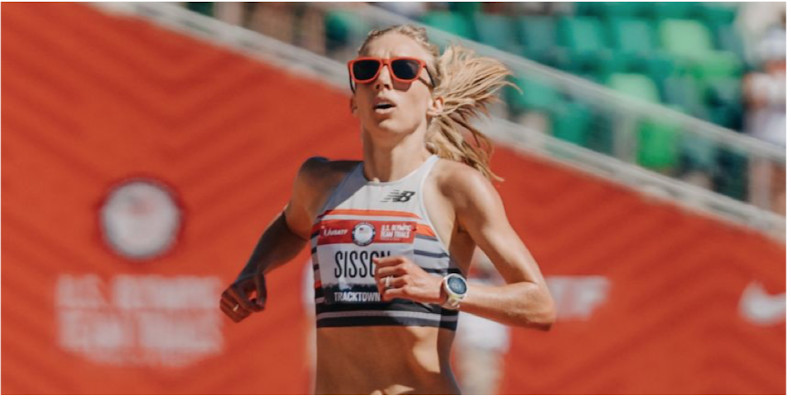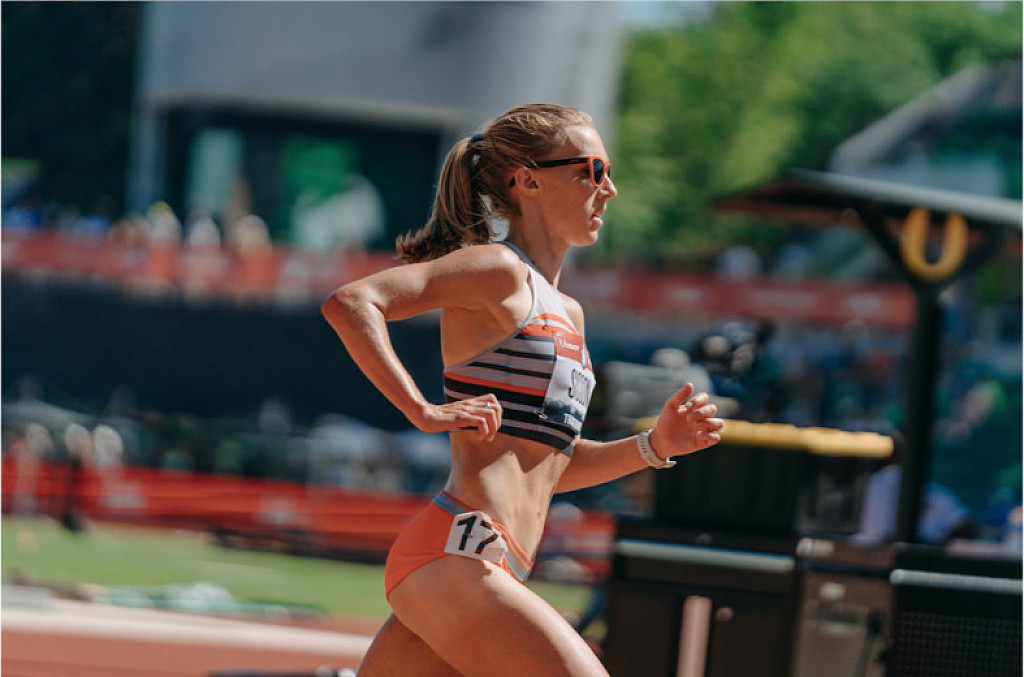Running News Daily
Running News Daily is edited by Bob Anderson. Send your news items to bob@mybestruns.com Advertising opportunities available. Train the Kenyan Way at KATA Kenya and Portugal owned and operated by Bob Anderson. Be sure to catch our movie A Long Run the movie KATA Running Camps and KATA Potato Farms - 31 now open in Kenya! https://kata.ke/
Index to Daily Posts · Sign Up For Updates · Run The World Feed
Emily Sisson’s 7 Secrets for Nailing a Tough Race—Like the 10,000 Meters at the Olympic Trials
The 10,000 meters at the Trials was run in unprecedented heat. Here’s how she kept her head in it.
A disappointing DNF in her last major race. Temperatures so hot that race organizers moved the competition nine hours earlier than planned. And a training partner and mentor who was unexpectedly absent.

None of this shook pro runner Emily Sisson at her third U.S. Olympic Track & Field Trials. On Saturday, the 29-year-old went to the front of the pack five laps into the women’s 10,000 meters—and never let up. Not only did she claim victory and secure her first spot on an Olympic team, her time of 31:03.82 was a new Trials record.
In her post-race comments, Sisson offered a master class in mental preparation for difficult efforts. Here are seven lessons you can take on how to steel your mind for hard work ahead, even if you don’t have an Olympic berth on the line.
1. Grieve your defeats—then let them go.
In 2019 and early 2020, Sisson was “all in” on making the Olympic team in the marathon, she said. So after dropping out of the Olympic Marathon Trials in Atlanta at mile 22, she felt heartbroken and confused.
Though she typically excels at moving on from bad races, Sisson struggled a bit more than usual. She allowed herself some extra time to feel disappointed—then, with emotional support from her husband, Shane Quinn, and physical assistance from her chiropractor, John Ball, she began pulling herself forward toward the next big goal, the 10,000 meters.
“No matter what my previous performance was—whether I had a really good run or a really poor one—I always kind of look forward and work hard for whatever the next thing is,” she said.
2. Break the race down into parts.
Rounding the oval for 25 laps in the 10,000 meters can be mind-numbing even in optimal conditions. In the 85-degree heat of Eugene, Oregon, on Saturday, it had the potential to feel downright brutal.
To stay mentally engaged rather than overwhelmed, Sisson and her coach Ray Treacy devised a race plan involving several segments. She focused on hitting the halfway point in 15:50—keeping it steady at 76 to 77 seconds per lap—then picking up the pace slightly until five laps to go. Then, it was all about pushing harder until she crossed the line.
In fact, she was so focused on this strategy that she was somewhat surprised when she saw her speedy finishing time. “I was just focused on the section of the race I was in,” she said, “and wasn’t thinking overall of a certain time.”
This “chunking” concept can work in a marathon, too, says Justin Ross, Psy.D., a clinical psychologist in Denver who specializes in athlete mental health and performance. For instance, think of the first 10 miles as the warm-up, the middle 10 as cruising, and the last 6.2 as the race to the finish.
3. Draw on your past successes—and others’.
Forget Netflix or HBO Max—during her buildup, Sisson would frequently watch race videos. These include her own past performances, such as her personal best 30:49.57 in the 10,000 meters at the 2019 Stanford Invitational.
“Sometimes it’s just seeing something you've done before and reminding yourself, ‘Oh, yeah, my legs know how to do this,’” she said. “It sounds kind of cocky, but it’s for me, it’s helpful.”
Also in her queue: races won by two-time Olympian and American record holder Molly Huddle, who scratched from the Trials on June 14. Watching championship races where Huddle has taken the lead from the front, and then won, inspired Sisson and brought feelings of connection to her longtime training partner.
“I like looking at them; I am a very visual person,” she said. “I’ve watched and re-watched videos of her running, and running away from the field. Having her as a mentor has been huge for me.”
You might not have any of your own race videos at the ready, but “we all have the ability to draw upon our past successes, both in and out of sport,” Ross said.
He recommends using your training log as your own personal power journal. “With each day’s training, write down areas when you executed mental toughness and how you were able to get through difficult runs,” he said. Reviewing these notes prerace will ward off the doubt and anxiety that can often creep in last-minute.
4. Reshape your narrative.
Recalling those victories of the past can shift you away from negative thought patterns. You can also recruit someone who knows you well as a runner—for instance, a coach or a training partner—to reinforce the message.
During the final phase of her preparations, Sisson traveled from Arizona back to Providence, Rhode Island, to see Treacy in person. These sessions improved her confidence as well as her fitness. “He knows how I think, and he knows to challenge the stories I have about myself in my head,” she said.
“I was telling him something along the lines of, ‘Oh, I can't outkick certain people.’ And he’s like, ‘That’s not true,’” she said. “He brought up a race that I did in college where I outkicked someone and ran a 65-second last lap.”
Because she trusts him and knows “he’s a realist,” his assessment wards off her moments of self-doubt. “If he says, ‘You’re capable of doing this,’ I know that’s what I’m capable of doing,” she said.
5. Add to your toolbox.
In addition to reinforcing her past strengths, Treacy also assigned her workouts to build the exact skills she’d need to hone her finishing speed. “We actually practiced running a lot of faster 400s,” she said.
In addition, she ran three 5Ks in her buildup, in which she consciously focused on picking up her speed in the last two kilometers. “Even when I was tired, I knew with 2K to go: all right, time to go,” she said. “I think that was great practice.”
6. Remember: It’s tough for everybody.
Living in Phoenix likely gave Sisson an advantage in the heat, even though she did her recent training this year in cooler Flagstaff and Providence. Still, she channeled the memory of tough workouts in scorching temps—and implemented the adjustments to her routine they required, such as trading hot coffee for caffeinated gum or a shot of espresso prerace.
At tough spots during the competition, she honed in on those advantages rather than dwell on the bad conditions. “Even when it felt really hot, I kept telling myself: ‘I know, you’re feeling the heat. But so is everyone else,’” she said.
7. View obstacles as opportunities
When 41 women toe the line on a scorching day, not everyone will be able to keep up with the lead pack. In fact, Sisson lapped many talented runners—all but six others in the field—en route to her victory.
Though she—along with second-place finisher Karissa Schweizer and Alicia Monson, who finished third—had to weave a bit as the race wore on, Sisson didn’t view these competitors as a hindrance to her progress.
In fact, she was grateful the race was condensed to one section instead of two, as proposed by USATF in late May. That way, even as a front-runner, she had competitors to key off of. “It kind of gives me something to eye in front of me and reel in,” she said. “They helped me.”
by Runner’s World
Login to leave a comment




